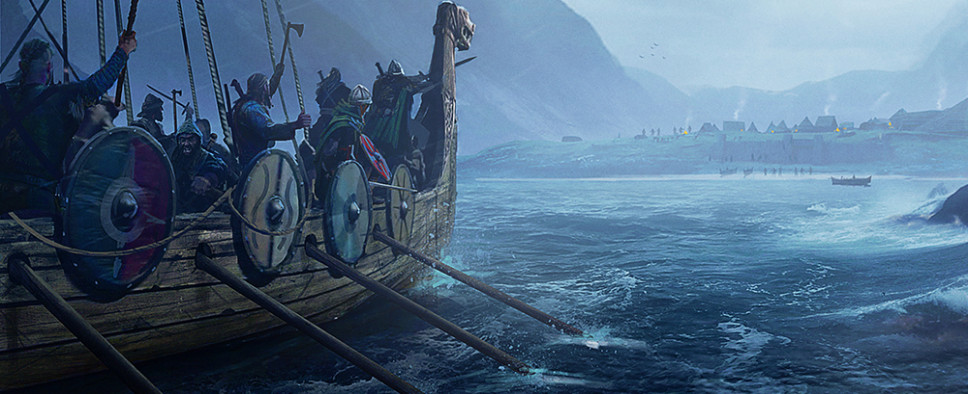Expeditions: Viking Review
-
Category: ReviewsHits: 15706

Article Index
Introduction
Expeditions: Viking is the latest RPG from the Danish studio Logic Artists and a sequel of sorts to 2013's Expeditions: Conquistador. However, whereas Conquistador was something of a mix between King's Bounty and Mount & Blade with rudimentary role-playing elements and a strong focus on exploration, Viking is straight up an isometric RPG with bits of exploration and long-term party management thrown in the mix for good measure.
And while I greatly enjoyed Conquistador for its unique historical setting, tactical turn-based combat and the endless sense of wonder and discovery extremely appropriate for a game about exploring a new and untamed land, its character development was extremely basic. Viking, on the other hand, greeted me with a robust character creation screen and a new role-playing system. Intrigued and curious, I jumped right in.
Character Development
In Viking you can customize your character's appearance, distribute attribute points and learn skills across 5 different categories with a total of over 50 skills, many of which have multiple ranks. Attributes improve your base stats and the efficiency of some of your skills, while certain skills, apart from being useful in combat, are also used in dialogues.
And while this system looks great at first glance, its biggest downside, in my opinion, is that by the time you complete the campaign you'll have enough skill points to learn every skill you can possibly need and then have some points to spare. It's hard to specialize your characters or make meaningful choices in regards to their development when you can pretty much be a jack of all trades with no trade-offs of any sort.
Still, it's a giant leap in the right direction for Logic Artists and as someone who enjoys figuring new games out, I greatly appreciate what they've done here.
The equipment system also got a complete overhaul since Conquistador and instead of abstract equipment points that determine the tier of your characters' pre-determined, class-specific equipment, in Viking you can outfit your characters with weapons and armor, and have them carry a couple of utility items that range from jugs of mead to poison-coated traps. This makes gearing up a more involved and engaging process.
Speaking of characters, in Viking you command a party, or hird, as the game calls it, of a dozen or so of them. Your hird consists of your main character, a number of story companions, and a few mercenaries you get to create yourself.
Each and every one of them, including the mercenaries, has a set of unique personality traits that are tested against your actions and decisions. Avoid combat and your aggressive party members will get angry, engage in diplomacy and your open-minded hirdmen will like you a bit more. This creates a careful balancing act between doing what you want and keeping your people happy, however since morale in Viking mostly just affects resistances to status effects, you don't have to worry about it too much.
All in all, in Viking you have a lot of options and flexibility when it comes to customization, but even though initially things may seem deep and complex, it's actually pretty hard to not create a functional battle-ready party. I would have preferred the game to not be afraid of punishing you for choosing poorly, however even as it stands, Viking's underlying RPG systems are competent enough to offer an enjoyable experience.
Story and Exploration
In Conquistador you traversed an expansive open map on your trusty steed and the majority of your interactions with settlements and points of interest happened through text, with combat being the big exception that took place on separate obstacle-ridden hex-based arenas.
Viking ditched this approach for a more conventional one. You have a painted overworld map peppered with locations you can freely explore and all the fighting happens in those same locations without any additional loading. This creates a more seamless experience and adds to the RPG “feel” of Viking.

